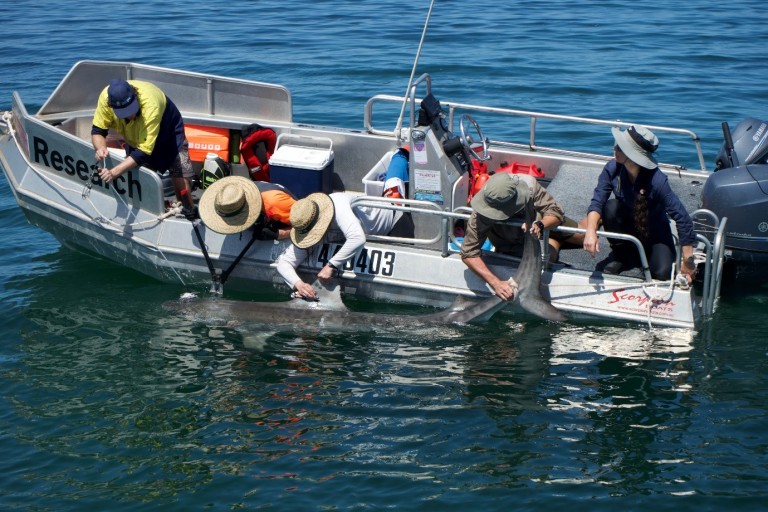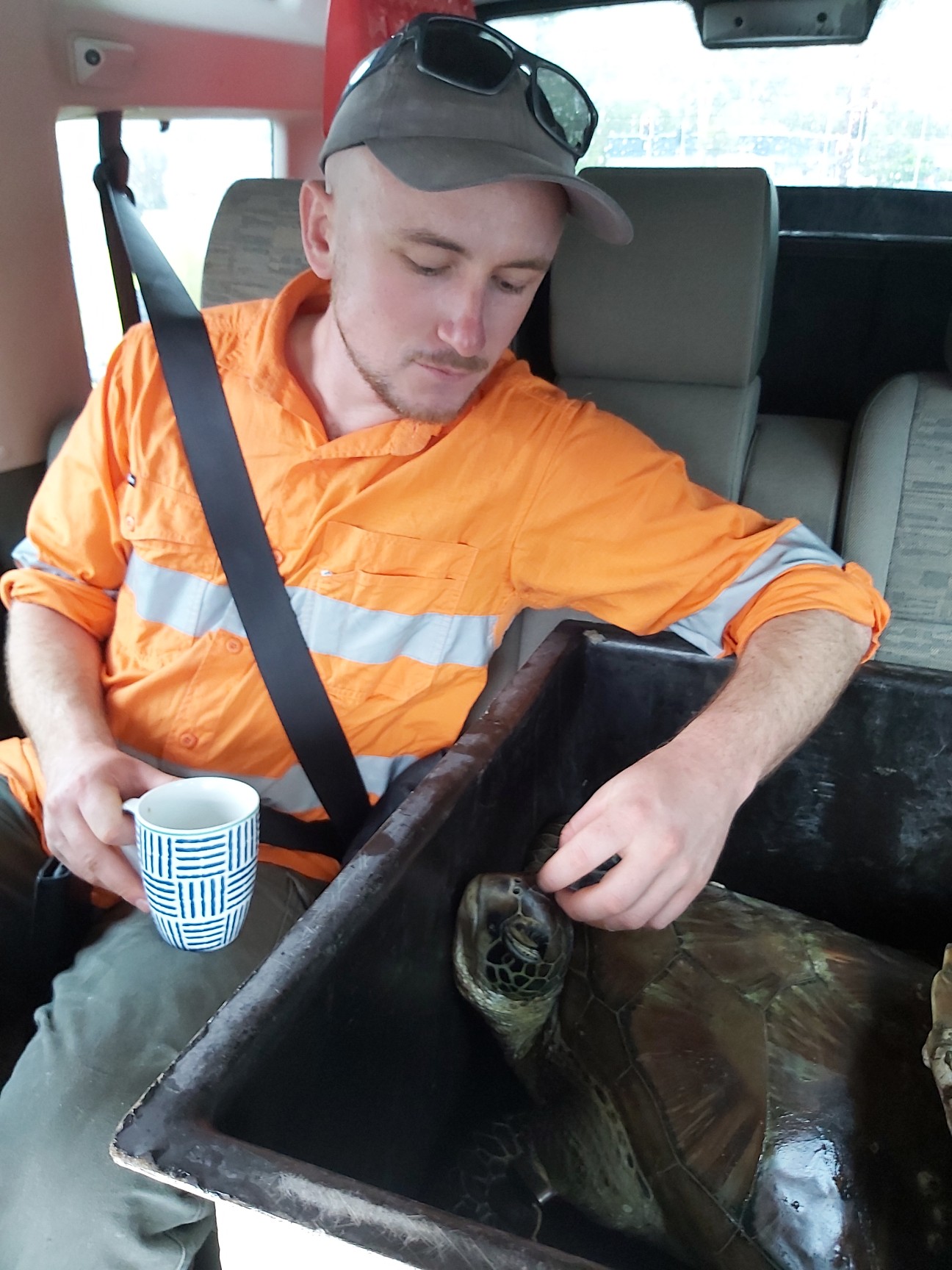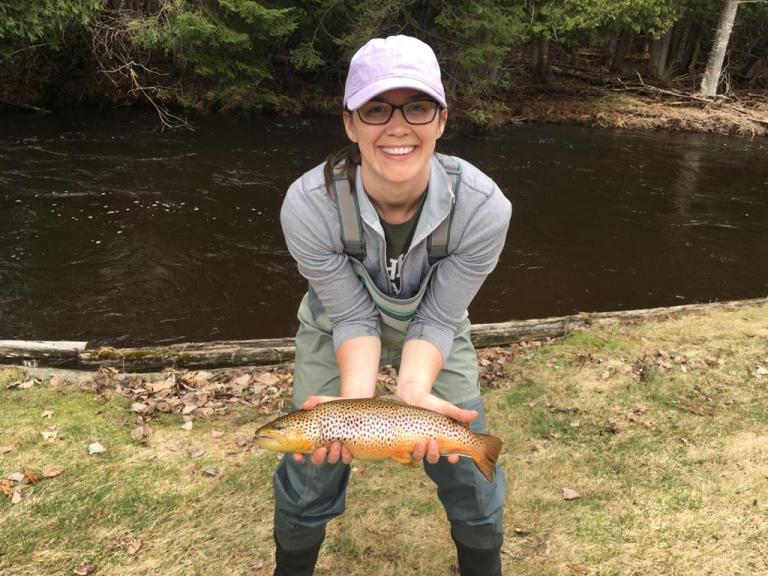E&E Seminar: Spatial ecology of marine megafauna: field techniques, analytical methodologies, and global threats (Sequeira Group Presentations)
Sequeira Group Presentations
Speakers
Event series
Content navigation
Description



Michael Taylor
Abstract
As part of the Gathaagudu Animal Tracking Project Mike’s PhD research utilises satellite tag data from a range of marine megafauna associated with the Shark Bay World Heritage Area’s extensive seagrass meadows. Location information from these GPS tags is used to determine the space used by individual animals and investigate how the underlying seagrass, and the spatial fragmentation of this habitat, drives changes in amount of space required by foraging individuals. Based on estimation of future habitat loss Mike aims to provide predictive models of how marine megafauna may utilise space in a changing environment. In the process he hopes to provide tools for proactive conservation in a region at catastrophic risk from future climate events.
Biography
Prior to joining the Sequeira Lab, Mike received his Master of Biological Sciences from UWA and his BSc from the University of Sheffield. Previously involved in fisheries science he has been involved in understanding the ecological importance of industrial structures as artificial reefs and has published a fish identification guide for the Perth region.
Michelle Vancompernolle
Abstract
The global oceans are at risk of anthropogenic threats resulting from climate change, overexploitation, and habitat degradation. Expediting the process of quantifying the risk of these threats in a standardized manner is needed to better assess risk across spatial and temporal scales. Previous indices have evaluated the cumulative impacts of global anthropogenic threats to marine ecosystems, which is difficult to apply to species that move between ecosystems, such as highly migratory marine megafauna. As such, we developed an index to quantitatively evaluate the risk of existing anthropogenic threats to over 250 marine megafauna (representing birds, fishes, mammals, and reptiles) across the global oceans, considering species’ full geographical distributions, conservation status, functional traits, and relative risk from 23 anthropogenic threats in four major categories (climate change, coastal impacts, fishing, and maritime disturbances), and using expert knowledge to determine the relevant vulnerability of each threat to each species. Here, I will present general methods and preliminary findings using this this threat index for marine megafauna (TIMM).
Biography
Michelle is a PhD student at the University of Western Australia working with Dr Ana Sequeira (ANU) and Dr Chari Pattiaratchi (UWA). Currently, Michelle is working on developing a threat index for marine megafauna that spatially evaluates the risk of anthropogenic threats to these taxa globally. Prior to joining the Sequeira Lab, Michelle received her MSc from Indiana University and her BSc from Michigan State University.
Hannah Calich
Abstract
Technological advancements are enabling ecologists to collect telemetry data at unprecedented rates. As the quantity and quality of telemetry data improve, these data can help answer fundamental ecological questions about animal behaviour and identify scenarios exposing species to anthropogenic threats. Analytical methods derived from statistical physics can be used to describe species’ movement strategies and suggest underlying drivers. However, these methods are not standard in movement ecology, likely because most resources assume readers have a background in physics, presenting a barrier for ecologists. To help facilitate the use of these methods in ecology, we introduce a statistical physics-based R package, PhysMove, that includes ten core methods for describing species’ collective movements, search strategies, space-use patterns, and intraspecific movements. We demonstrate these methods using satellite telemetry data from bull, great hammerhead, and tiger sharks. Results indicate that each species follows a unique movement strategy, and we discuss how these strategies may help support their co-existence. We hope to inspire the community to explore these methods and assist with advancing knowledge of the key movement drivers and fundamental properties of animal movement to better support conservation management.
Biography
Hannah’s research is focused on developing and applying innovative methods to study the spatial ecology and conservation of migratory marine megafauna. As a postdoctoral fellow at ANU Hannah will focus on identifying global areas of ecological significance and assessing the efficacy of existing marine protected areas as part of the MegaMove project. Hannah also loves to get out in the field and is a team member on the Gathaagudu Animal Tracking (GAT) Project in Shark Bay, WA. Prior to starting at ANU, Hannah completed a PhD with Ana Sequeira at the University of Western Australia (Perth, Australia), a MSc from the University of Miami (Miami, USA), and a BSc (Hons) from Dalhousie University (Halifax, Canada).
Location
Please note: this seminar will be held in the Slatyer Seminar Room and via Zoom, details are included below.
Slatyer Seminar Room, Rm N2011, Level 2, East Wing, RN Robertson Building (46)
Please click the link below to join the webinar: https://anu.zoom.us/j/4636530853?pwd=bEhOWUxXaFhOYTFNZUxNVkhGY2o5dz09
Passcode: 177828
Canberra time: please check your local time & date if you are watching from elsewhere.

